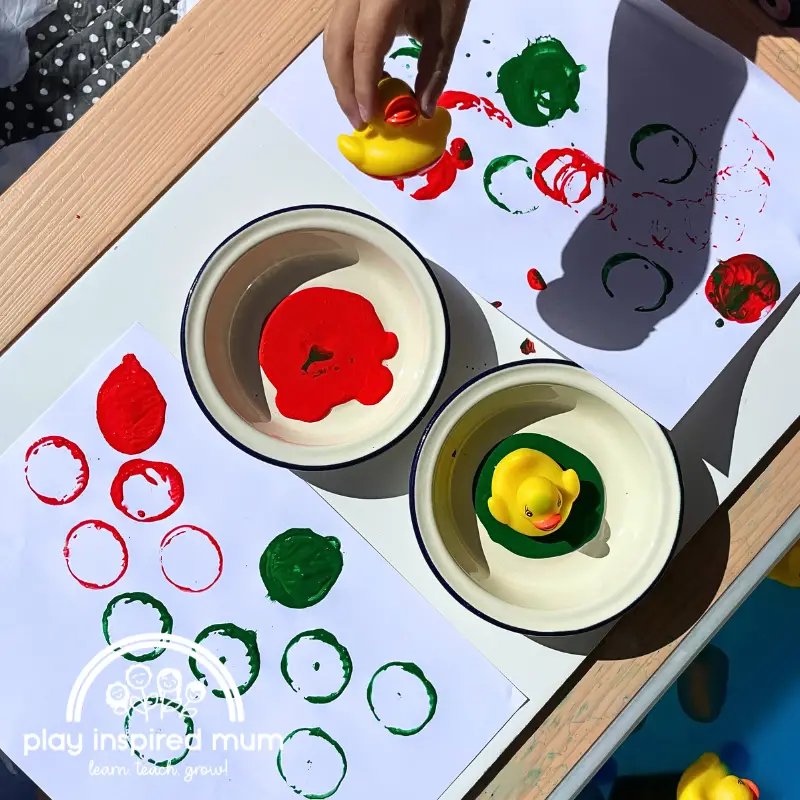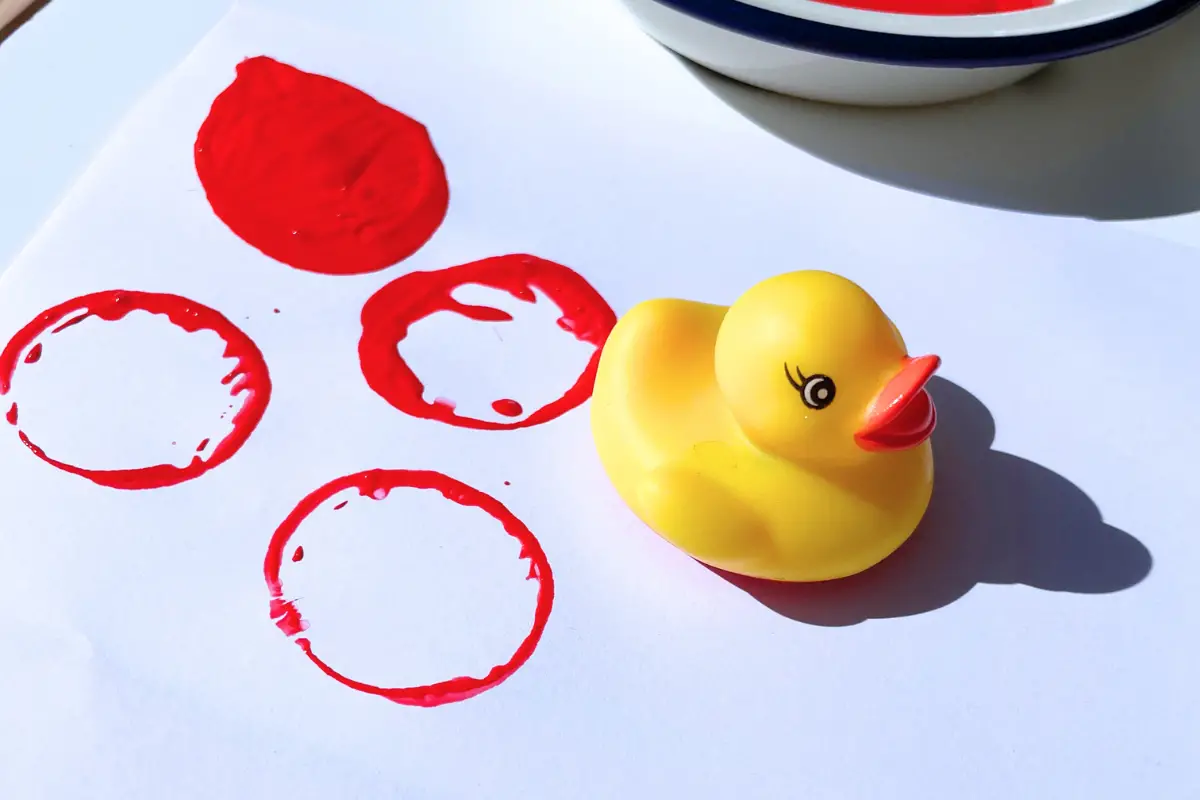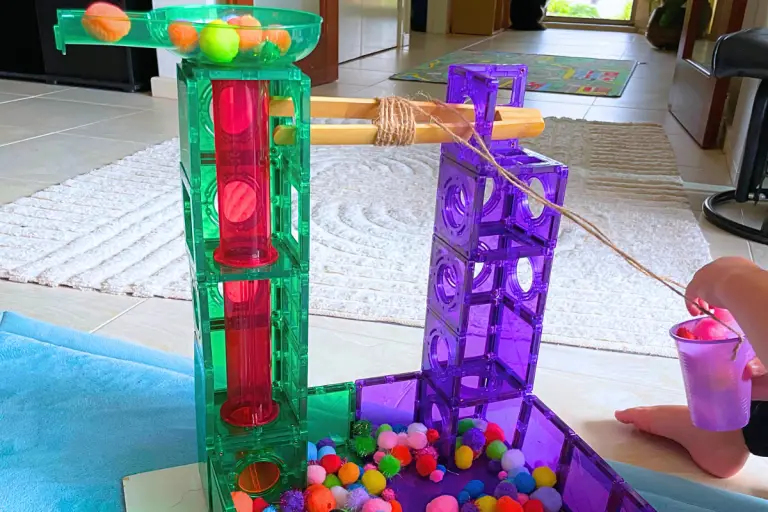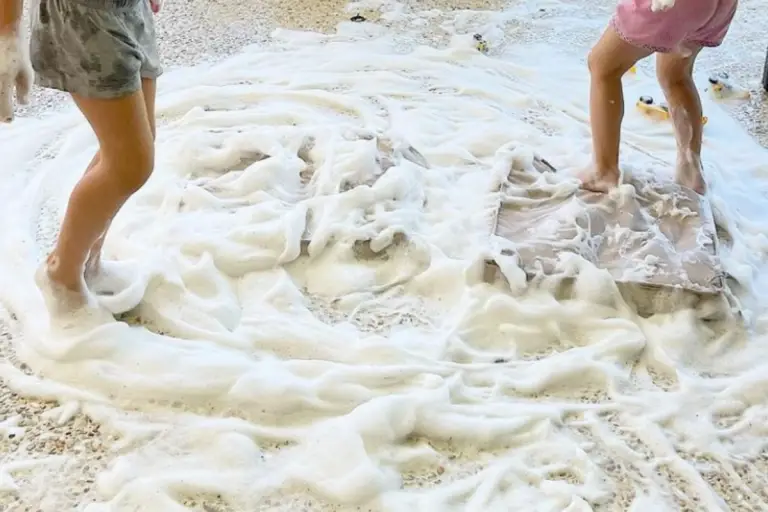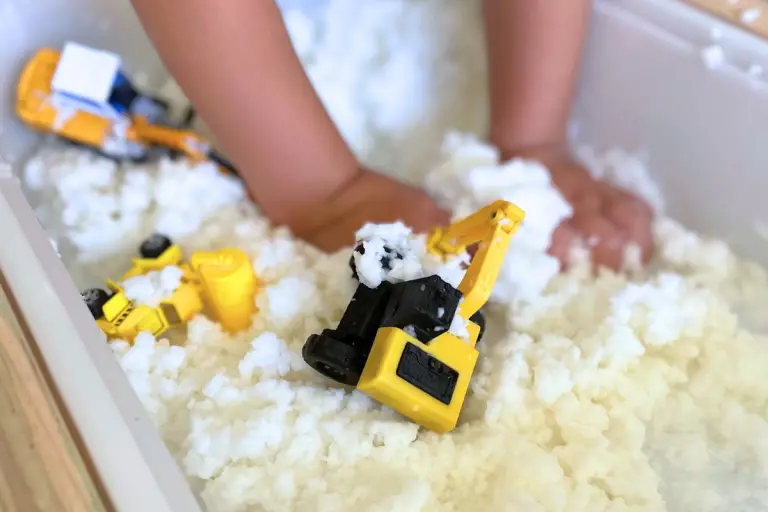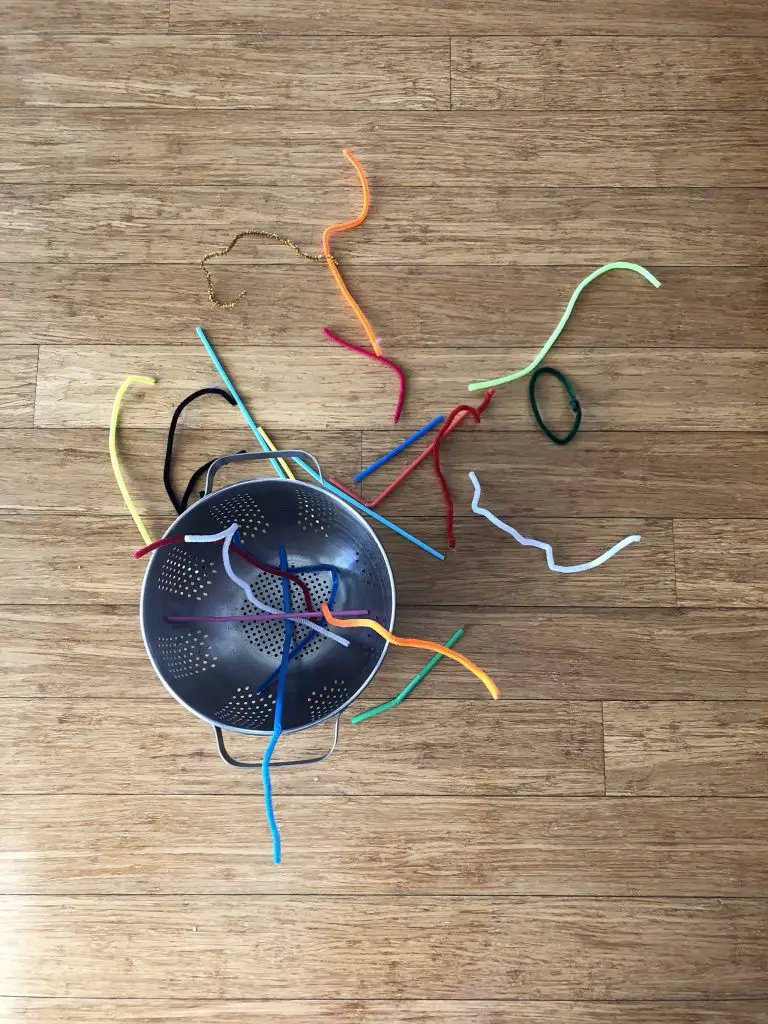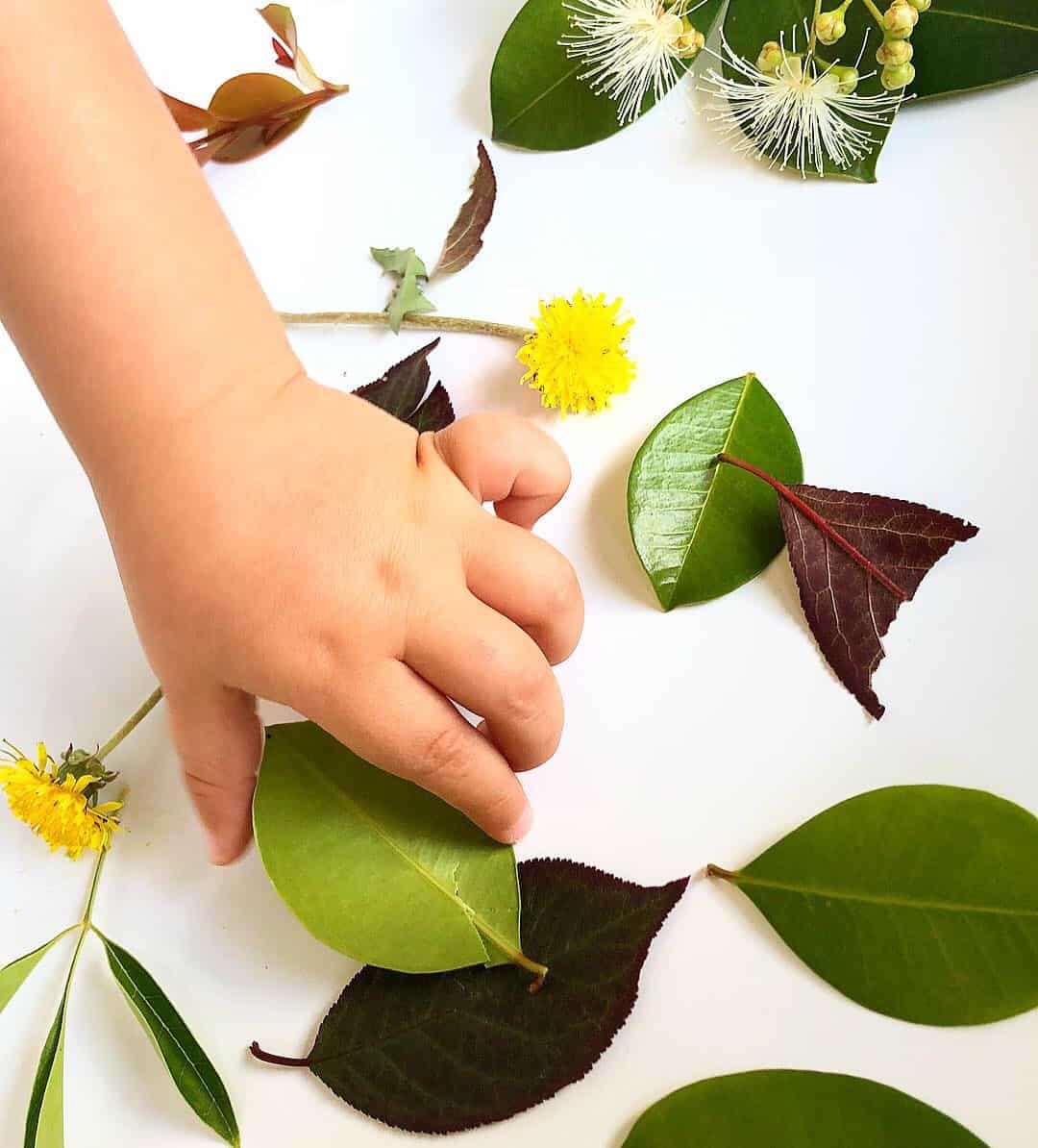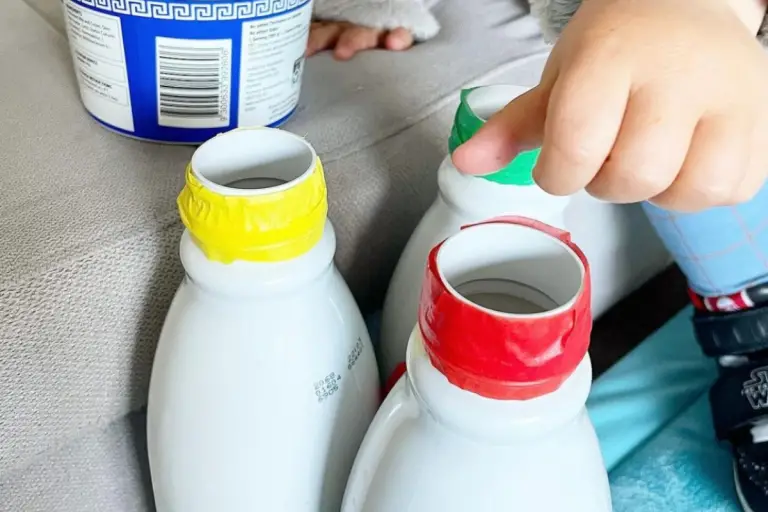Rubber Ducky Stamping
Disclosure: This blog contains affiliate links which I may earn a small commission from if you purchase through them, at no extra cost to you.
Pop your paint brush aside and have fun with rubber ducky stamping with your toddler.
This is a great standalone activity or one to further expand on a 5 little ducks theme.
Rubber ducks are a great tool for babies and toddlers to use for painting.
Learn more about rubber stamping and the benefits of using a ducky to paint.
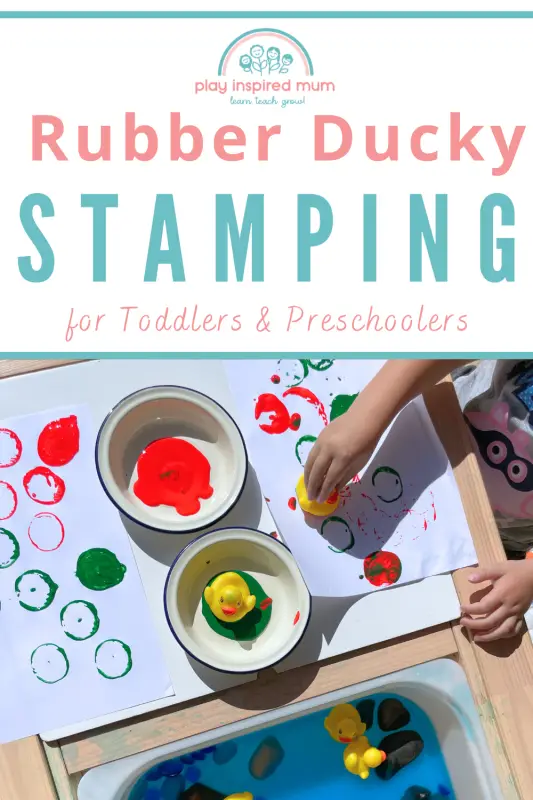
Rubber Ducky Stamping
Rubber ducky stamping is a craft technique that involves using rubber ducks as stamps to create designs on various surfaces, such as paper, fabric, or cardboard.
The process involves applying ink or paint to the underside of the duck, pressing it onto the surface, and lifting it off to reveal the stamped design.
Rubber ducky stamping can be used for a variety of creative projects, such as card-making, scrapbooking, and creating DIY gift paper.
How about you give your little rubber duck a holiday away from the bath tub and have him join your toddler for some stamping fun?
What you need for Rubber Ducky Stamping
- Rubber Duck
- Paint
- Paper
- Shallow Paint Dish
We used our ducks to stamp on paper.
You can use cardboard and even fabric for your duck stamping.
Mr 2 chose to use red and green paints.
Using two different colour paints is fun as it allows toddlers to experiment with mixing colours.
You could also use ink instead of paint.
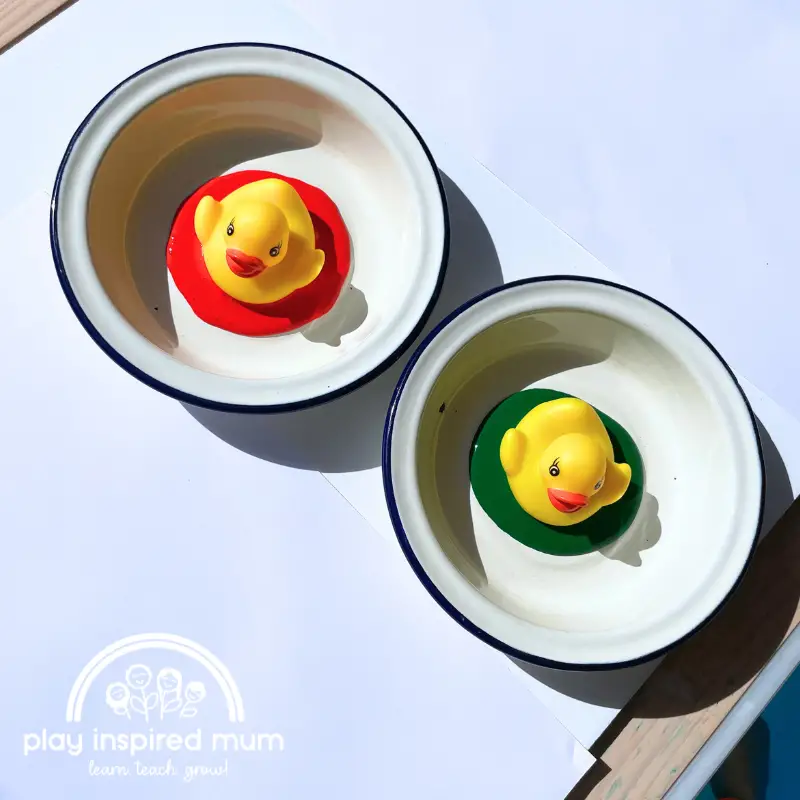
Tips for stamping with toddlers
Stamping can be a fun and engaging activity to do with toddlers.
However, it is important to take safety precautions and choose age-appropriate materials to make the activity safe and enjoyable.
Here are some tips for stamping with toddlers:
- Choose non-toxic paints and ink pads: Look for paints and ink pads that are specifically designed for children and are non-toxic, washable, and easy to clean.
- Use large stamps: Choose stamps that are easy for small hands to hold and manipulate. Large rubber stamps with simple designs are a good choice for young children. Rubber ducks are perfect for developing hands.
- Use sturdy paper: Choose sturdy paper that can handle the pressure of stamping and won’t tear easily. Construction paper or cardstock are good options.
- Provide supervision: Toddlers need constant supervision when stamping to prevent them from putting the stamps or ink in their mouths.
- Use a tray or mat: Use a tray or mat to contain the mess and make clean-up easier. We love Rudie Nudie waterproof play mats for all kinds of activities – painting included! They hold so much liquid and are super simple to clean.
- Keep it simple: Toddlers have short attention spans, so keep the activity simple and limit the number of colours you provide.
- Have fun: Encourage your toddler to have fun and explore their creativity with stamping.
- Focus on the process rather than the end result.
Stamping with toddlers can be a fun and rewarding activity that promotes creativity and fine motor skills.
With a little preparation and supervision, you can create a safe and enjoyable stamping experience for your child.
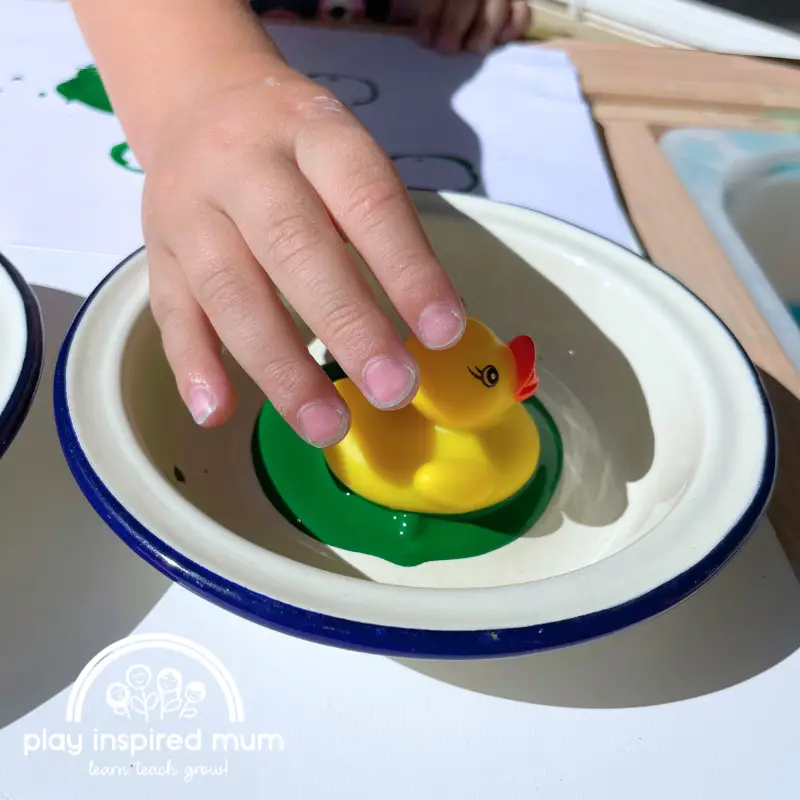
How to set tip rubber ducky stamping activity
- Pour a thin layer of paint into the shallow paint dish
- Press the duck into the paint
- Transfer the duck to the paper and press gently before slowly lifting the duck from the page
- Repeat!
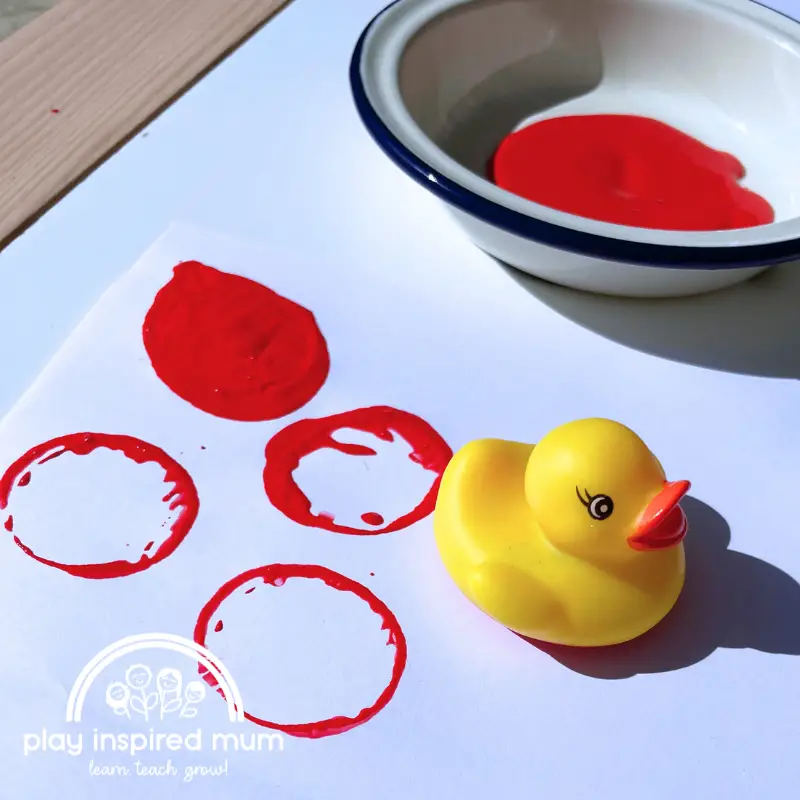
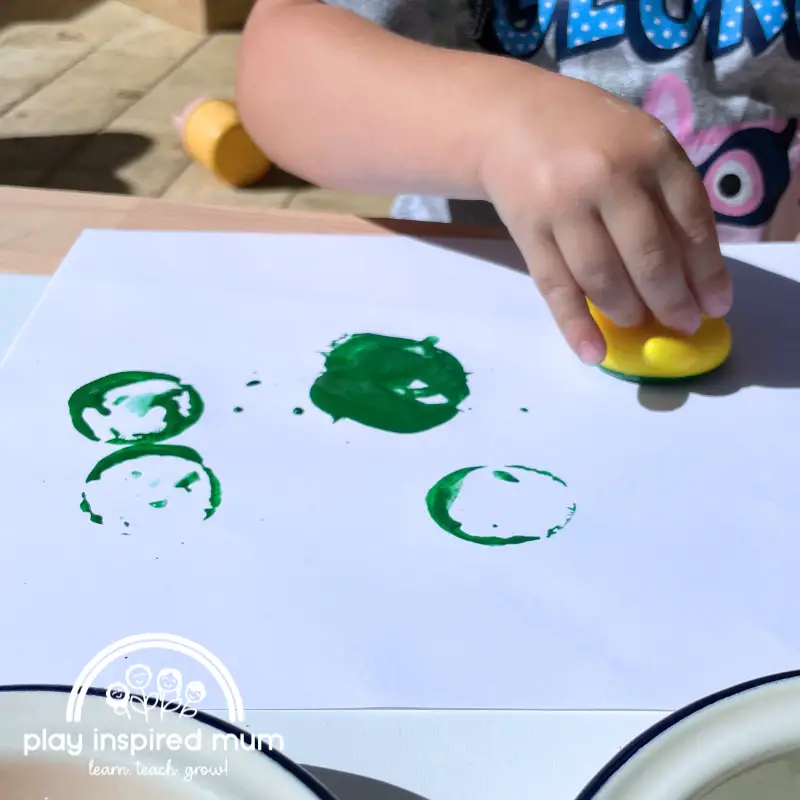
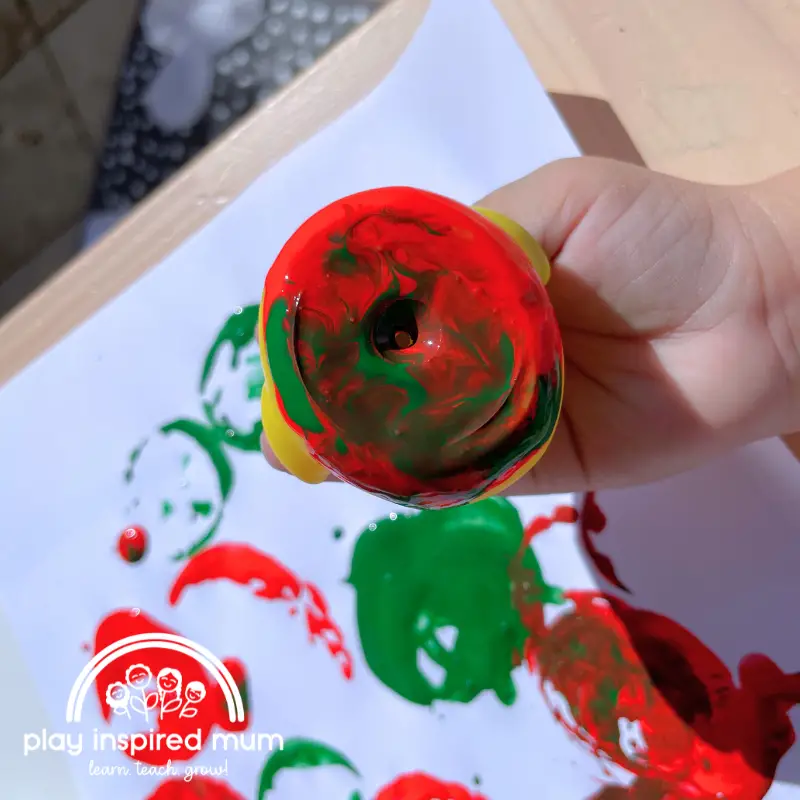
This activity is so simple and so effective. Your toddler will love experimenting with their duck and the paint.
Mr 2 loved the sound the duck made as it settled into the paint. As he squeezed the duck, air escaped from the hole underneath making bubbles in the paint as he stamped it.
Mixing the colours became a highlight for him. He started by mixing them accidentally however it did not take too long before there were all different shades across his page.
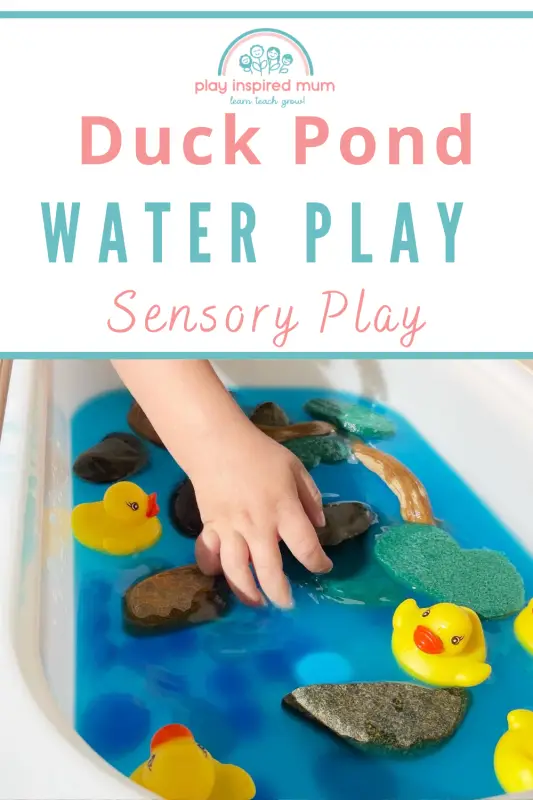
Benefits of using a rubber duck for painting
Chunky rubber ducks can offer a range of benefits for children.
Here are some of the benefits of using rubber ducks for painting:
- Improved grip and control: Chunky ducks are easier for young children and those with fine motor skill difficulties to hold and control.
- Increased creativity: Using rubber ducks for painting is a little left of centre. This outside of the box technique can inspire more creative thinking and creativity.
- Greater tactile experience: Rubber ducks can provide a more tactile and sensory experience for the painter, as they can feel the weight, texture, and shape of the duck as they work. They may even be rewarded with a squeak with the right amount of pressure
- More comfortable painting experience: Using chunky tools can reduce hand and wrist strain, making the painting experience more comfortable for longer periods of time, especially for younger children with lesser developed fine motor strength.
